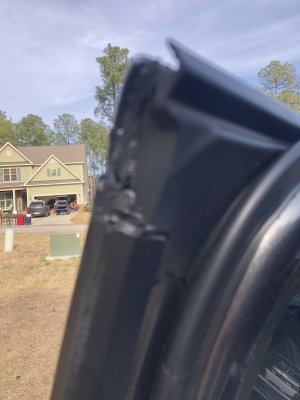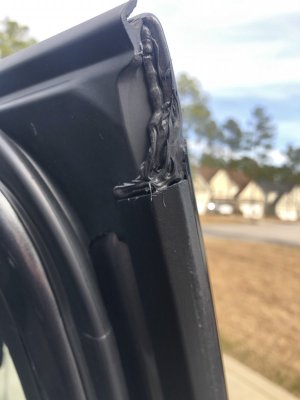Found this info online, but the file I saved was too big, so here’s the highlights.
Start by removing the grid-covered elbow vent beneath the exposed part of the door latch. Rotate the elbow vent 180 degrees so the elbow faces upward instead of down, and push it back into place. Be careful not to push on the grid, as it will crack. Remove and store two more plugs from the bottom of the front doors. Note that the rear doors only feature the horizontal plugs.
By removing the plugs at the bottom of each door, you’re increasing the amount of air flow through the door. According to members of the forum, reversing the elbow vent also changes the air flow and allows less water into the door.
Spray the latch assembly, I used Aerokroil. It’s hygrophobic, so it repels water, and spreads out over a few days to become a film on the metal pieces of the latch. This should keep water from freezing inside the mechanism and causing the issue. Attach the nozzle to the bottle, shake well, and insert the nozzle into the latch. Coat as much of it as you can, and at many angles, to ensure it coats as much of the mechanism as possible. A suggestion from a forum member on F150forum.com was to loosen the three torx bolts which hold the latch in place, in order to get the lubricant in better.”
Work the locks in order to speed up the process and ensure better coverage, I worked the locks several times. I’m not sure if anyone else did this, but I thought it would be a good idea. I used the key fob to lock and unlock the doors several times, and also worked the handles.”
Now, you should be all done!
It worked for my truck, 2017 Raptor. Issues was Driver’s front door.
OR
You can take it to your local Ford dealer and have them perform a TSB (technical service bulletin) 18N03 on the truck door handles... This includes taking each door apart, drying it out thoroughly, and applying sealant to the openings.





